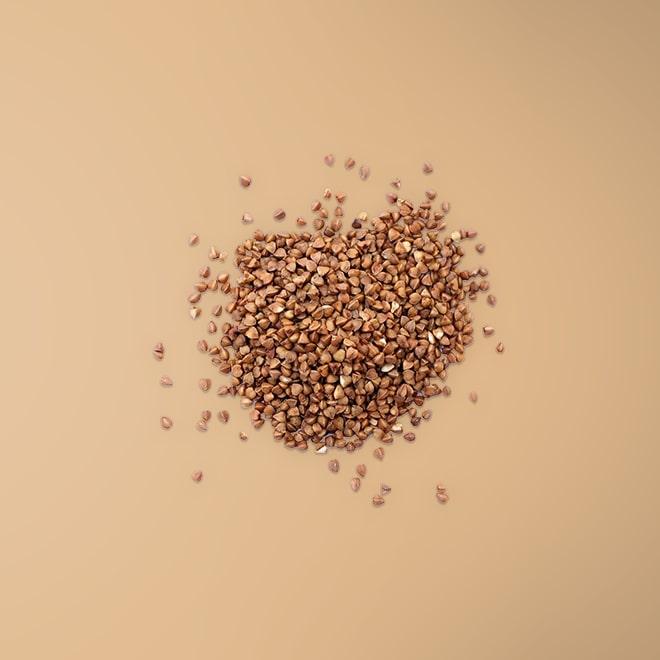Buckwheat




Buckwheat actually isn't wheat at all, but the gluten-free seeds of flowers called groats! The name buckwheat was supposedly derived from the Dutch word ‘bockweit’, which means “butch wheat,” referencing buckwheat’s beechnut and wheat-like appearance.
Buckwheat is native to Asia, and was primarily cultivated in China before spreading to Northern Europe and Russia. Because buckwheat has a short growth cycle, keeps weeds at bay, prevents soil erosion, and thrives in less-than optimal environments, it became a staple in Europe and Russia and was grown between crop rotations. In the 17th century, buckwheat finally made its way to the United States.
While buckwheat can be cooked whole, it can also be ground into light or dark flour. The darker counterpart contains far more soluble fiber, which helps balance blood sugar levels for people with diabetes. Buckwheat is found in all types of cuisines, from soba noodles in Japan to pancakes in Western countries.
When buying buckwheat, make sure that there are no signs of moisture in the bags or bins.
To store buckwheat, place in a sealed container and store in a cool, dry place. In warm climates, it’s best to refrigerate your buckwheat.
Whole buckwheat can be stored up to a year, but buckwheat flour will only last a few months.
For a new flavor in your baked goods, try mixing buckwheat flour with other flours at a 1:1 ratio.
You can cook whole buckwheat like you would oatmeal or porridge.
Because roasted buckwheat has an earthy flavor, adding roasted buckwheat flour to soups or stews creates a heartier flavor and thicker consistency.
Cooked buckwheat makes a great topping for a healthy and filling lunch or dinner salad.
Buckwheat is a very good source of manganese, copper, magnesium, and phosphorus.
Buckwheat contains high quality protein.
Buckwheat should be rinsed in cold water before cooking to clear out any unwanted particles that could be hiding in between the kernels.
Want an earthy, nutty taste, similar to cumin’s earthiness? Try “kasha,” also known as roasted buckwheat!
Buckwheat is a great wheat substitute for gluten-intolerant people, as buckwheat contains no gluten but has a very similar texture to many grains.
Buckwheat is an excellent source of highly soluble dietary fiber, which assists in controlling blood sugar, reduces plaque buildup in blood vessels, and has been proven to lower the risk of high cholesterol and high blood pressure.
This type of fiber not only regulates internal bodily functions, but also has been shown to reduce the risk of breast cancer. It is also a source of resistant starch, an insoluble dietary fiber which improves colon health.
Corrections or improvements? Email us at
content@sidechef.com